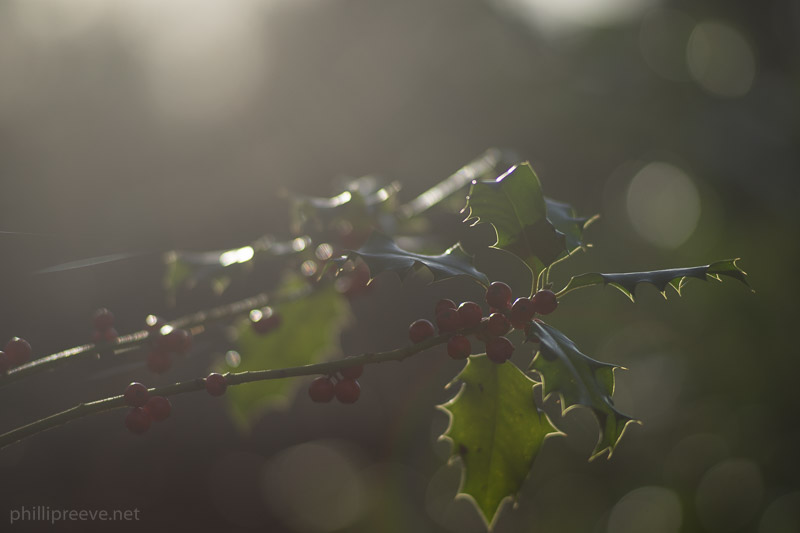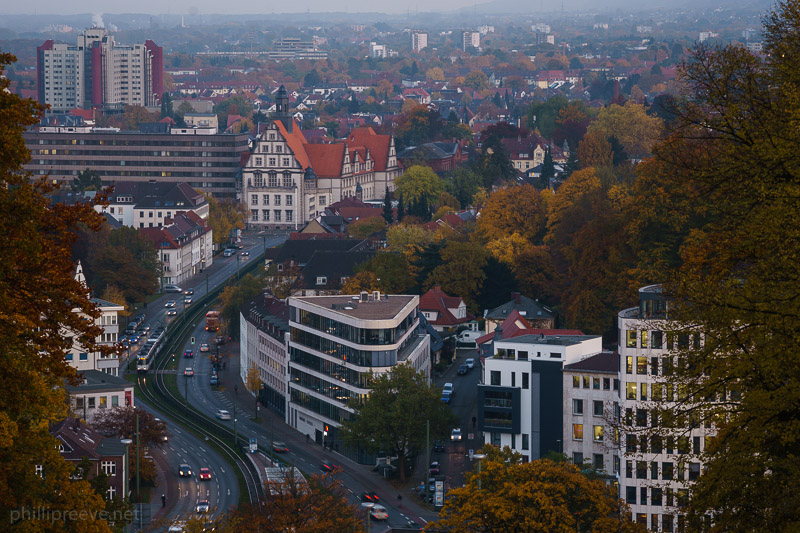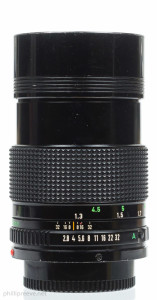The Canon FD 2.8/135 is a lightweight and affordable lens. On my Sony a7 it performs very well as a portrait and landscape lens.
Sample Images



Specifications
-
- Diameter: 62mm
- Length: 80mm
- Filter Diameter: 52mm
- Weight: 395g
- Close Focusing Distance: 1.3m
- Number of Aperture Blades: 8 (slightly curved)
- Elements/Groups: 6/5
- Mount: Canon FD
The Canon FD 135mm 1:2.8 usually sells for around $40-60 at ebay.com (affiliate link).
In Germany you can buy it for 40-60€ at ebay.de (affiliate link).
Versions
Canon only made one 2.8/135 lens with FD mount. It is part of the “new FD” generation so it is easier to mount than older FD lenses. You will find people referring to it as nFD or FDn.
Canon also made 2/135, 2.5/135 and 3.5/135 lenses but these will have different qualities than the FD 2.8/135 in this review.
Compatibility
You can use the lens on a wide range of old Canon FD-mount film-cameras like the Canon A1 or AE-1.
Because of the flange-focal-distance of Canon FD lenses all adapters for DSLR cameras either contain an optical element which will reduce image quality a lot or you lose infinity focus. I wouldn’t bother to use one of those adapters.
Mirrorless cameras have a much shorter flange focal distance and you can buy adapters for Fuji-X, Sony-E, Micro Four Thirds and Samsung NX which won’t degrade image quality or lose infinity focus
I usually recommend Sony Alpha 7-series cameras for the use with older manual lenses because they are the only ones with a fullframe sensor and in my experience most lenses work best on the larger sensor. In my eyes there is little reason to use this lens on a APS-C camera, 18-55 Kit lenses will give better results.
Here are links to adapters to mount the Canon FD 2.8/24 to Sony E mount cameras: Amazon.com |Amazon.de (affiliate links).
I use an expensive Novoflex adapter (link to my review) but the cheaper ones usually work well enough.
Build Quality
Build quality is good by today’s standards but if you compare it to other manual lenses the lens feels a bit cheap.
The lens is mostly metal or high quality plastic, I am not quite sure. Some parts like the aperture ring at the front plate are obviously made from plastics. All the markings are embossed.
Size, Weight and Handling
The Canon FD 2.8/135 is a medium sized lens and not too heavy at about 400g. It is very well balanced on my Sony Alpha 7.
The focusing ring travels about 200 degrees from 1.3m to infinity. I think that’s a very reasonable focus throw. I would have wished for a little more resistance though, it feels a bit too loose.
The aperture ring has half-stops from f/2.8 to f/22 but it requires too much force to move it if you ask me.
All in all operation works well enough but other lenses handle a bit more pleasant. The Canon new FD 2.8/135 feels a little bit cheap.
Lens Hood
The Canon FD 2.8/135 has a small integrated hood.
Close Focusing Distance

The Canon new FD 135mm 1:2.8 has a close focusing distance of 1.3m which results in a reproduction ratio of 1:7 which is about average for a 135mm lens.
The lens is a bit softer at f/2.8 closer distances than at longer ones and I would stop down to f/5.6 for very good sharpness.
Image Quality
Vignetting
Notable but not excessive at f/2.8. Reduced a lot by f/4 and gone for all practical purposes by f/5.6.
Flare Resistance
Flaring can be a problem with the FD 2.8/135. I couldn’t provoke any ghosting but in a worst case scenario you will see a painful contrast loss. A longer more effective lens hood than the one built in might help with this issue.


 Sony a7 | Canon FD 2.8/135 | f/2.8 | shaded with hand
Sony a7 | Canon FD 2.8/135 | f/2.8 | shaded with hand
Distortion
A very small amount of pincushion distortion which should be irrelevant for about any application.

Chromatic Aberrations
There is a moderate amount of lateral CA and you should correct it in your raw converter.
Longitudinal CA is quite obvious in some scenes and much more of an issue than lateral CA because it can’t be easily corrected.
Bokeh
The Canon FD 2.8/135 draws a very pleasant bokeh and this is one of it’s biggest strengths.

The cat-eye effect can be seen at f/2.8 but it isn’t too pronounced. Stop down to f74 and it’s mostly gone.

The Canon FD 2.8/135 has 8 aperture blades. So out of focus highlights stay very round when you stop down.

Sharpness
The Canon FD 2.8/135 is very sharp in the center from f/2.8, stopping down to f/4 makes the center excellent and it becomes softer again from f/11.
The midframe region is good from f/2.8 but benefits from stopping down to f/4 as well from were it is very good.
The corners show good resolution at f/2.8 but very low contrast, for very good results it makes sense to stop down to f/5.6 and they are best at f/8.
So the Canon is a sharp lens and you can sue it at f/2.8 without hesitation. Stopped down to f/5.6 there is little to complain about.
Compared to
Canon nfD 2/135 – I never had the chance to compare both lenses but I have seen quite few very nice images FD 2.8/135’s bigger brother. It is a bit expensive though and much heavier.
Minolta MD Rokkor 2.8/135 – Both lenses are similar in size and performance, I think the Minolta is a tiny little bit sharper. I prefer the Minolta’s build quality but the Canon has 8 aperture blades and focuses a bit closer. It is also 130 grams lighter.
Minolta MD Zoom 4/75-150 – A very interesting lens which is as sharp as the Canon but more versatile. For landscape photography I would prefer the Minolta.
Conclusion
good
|
average
|
not good
|
The Canon FD 2.8/135 is a good lens optically. From f/2.8 it is sharp across the frame. The bokeh is very nice and makes this lens a very good solution for portrait photography.
CA is the only real optical issue I found can be a annoying for some scenes but for portraits and distant landscapes it shouldn’t be a problem. You also might find that the FD 2.8/135 feels somewhat cheap and other lenses are more pleasant to use.
So all in all the Canon FD 2.8/135 is a very capable lens and I can recommend it with only a few reservations.
The Canon FD 135mm 1:2.8 usually sells for around $40-60 at ebay.com (affiliate link).
In Germany you can buy it for 40-60€ at ebay.de (affiliate link).
If this review was helpful to you, please consider using one of my affiliate links. I will earn a small commission on your purchase and it won’t cost you anything. Thanks!
Full Resolution Sample Images: Canon FD 2.8/135 on Sony a7
All images are processed in Lightroom from Raw. Many more samples in my Canon FD 2.8/135 flickr album.





Other Articles
This site contains affiliate links. If you make a purchase using any of the links marked as affiliate links, I may receive a small commission at no additional cost to you. This helps support the creation of future content.
Latest posts by Phillip Reeve (see all)
- Review: Samyang AF 75/1.8 FE - April 12, 2021
- The FE-List now has 113 lenses on it - March 25, 2021
- 2020 – Year’s end review - December 28, 2020








It seems, that the lens is a good choice for low budget and an option for my Tamron 2.8 135.
Hi Phillip,
Would really love to see you try out the Konica AR 135mm f3.2. It’s cheap but in my eyes it’s a magic lens. Would be good to see how it’s holds up to your fd
What makes it special in your eyes?
I have quite a few shots taken with that lens on Instagram, it’s one of my favorites. It has a very nice rendering and is acceptably sharp wide open, stopping down to f5.6 it’s very sharp. However, I mostly shoot it at f3.2. My name is mrbassee on Instagram. On your recommendation, or janniks, I have acquired a c/y zeiss 100 f3.5, 50 f1.4 and the Minolta md 75-150, very special lenses. I really like your work.
Konica Hexanon 135mm f3.2 doesnt seem to have the problem with ca as the Canon fdn 135mm f2.8 has. Its a very nice portrait lens and landscape lens. Very nice contrast and a minimum focus if onley 1m makes it very usefull.
Regards Göran
Hi Göran,
I would be more than surprised if it was better corrected for CA since I don’t know any tele without special glass which is well corrected for axial CA. Do you have some samples online?
Cheers
Phillip
Here are some photos I have taken with Sony A7rii :
https://flic.kr/s/aHsm4FsLCN
Regards Göran
Now I actually saw some ca in the upper left corner in one of the Pictures you can see in the link a sent, so you were right. I Think its ok for a legacy lens, but even some modern lenses got the same amount of ca, and for me thats not ok.
Hi! Nice review! Would you prefer the Canon or the Minolta 135mm 3.5 for portraits?
I don’t have any experience with the Minolta 3.5/135
Hi, Phillip
Always love reading your review.
I wonder if there are significant differrent between the MC and MD Rokkor 135/2.8?
In my country, the MD version is really hard to find.
the late MC is the same optically as the earlier MD. The older one is said to be a bit softer but with nicer bokeh
I have the Canon FD 2.5/135 and it performs very similarly when i compare my test crops to yours. It’s acceptably sharp at f/2.5, good at f/3.2, and great at f/5.6. It has the same CA issues (lateral is easy to fix), and has some flare but I’ve found the built-in hood to work very well unless the sun is in the frame. It also develops a hot spot above f/9.5 in bright lighting, but that could just be my copy. One big difference from the 2.8 is that the 2.5’s old FD all metal construction feels very solid to me, at the expense of weight – 630 g.
Hello,thank you for the very good reviews you publish ! I have a question you might be able to answer,i need a not too expensive 135mm and was thinking about a nikkor 135 2,8 Ais. Do you have any idea how it performs in regards to this canon fd 135 or other 135 ? My use is mainly landscape.
In brief,which is the best 135 under €300
Thank you !
Nicola
I have only used the Canon nFD 2.8/135 and Minolta MD 2.8/135 so I can’t answer which is the best 135 under 300. My guess would be the FD 2/135 (if you geh it under 300)
Thanks for this review! After reading it, I got one of these in good shape for not too much money, and my initial testing shows it to be much much better than the three vintage 135s I already had, at least at infinity. I got it to try to get better infinity sharpness at this FL for an upcoming trip to Iceland, and I’m very glad I did. I already had the Vivitar close focus f2.8 135, which is very nice for close work, but not nearly as good as this Canon at infinity. My copy of the Konica Hexanon 135 3.2 is not very good at the edges, though the lens is tiny, relatively close focusing, and has good bokeh. I also have an old striped Meyer-Gorlitz 15 bladed monster, which is pretty sharp but mine is often a bit glowy.
Thanks for the review. Just found one this morning in perfect condition at an estate sale for $15. The only drawback here seems to be that CA which is very fixable. Can’t wait to try mine out.
“It is also 130 grams lighter.”
It is? Based on your articles and Google, the difference is only 15g?
No, 130 g is correct because I am talking about the older and heavier Rokkor. There is a lighter plain MD version but I have no experience with it.
Hi Phillip,
I have been following your blog for a while and it did open up my eyes how manual lenses work with A7 series cameras. I’m currently using A7II and according to your recommendation i purchased a nFD 135/2.8 a while ago. So far I do like using it, particularly for portraiture.
However, what annoyed me was that the pictures sometimes were with a layer of purple colour. It does not happen at every scene but when it happens, all the pictures taken at that scene (same angle and same subject) will be purpled.
Is it because of the longitudinal CA you mentioned ?
I guess it is. It happens if you have a very high local contrast.
My issue is that the whole picture would be covered by a purple layer. Does high local contrast cause a result like this ?
I encountered this problem only with my Canon nFD 135/2.8 and nFD 24/2.8, but not Minolta MD 50/1.4
I am pretty sure that you can provoke it with a 1.4/50 as well as long as you are at f/1.4 or f/2. The only workaround is to stop down or buy a better corrected lens like the Samyang 2/135
Thanks for your reply Phillip 😉
Hi Phillip,
I just discovered your website, and you and your team are making such an excellent job to make it easy for beginners like me interested in vintage lenses.
I’m quite interested in this Canon lens and had a look on eBay to buy it, but I am quite puzzled by all the different versions of this 135 mm.
I see versions from Makinon, Admiral, Vivitar which are a bit cheaper than the ones branded Canon (although they look the same).
So my question is, what does it mean? Are they of lesser quality? I imagine they were not built by Canon but under license.
Thank you!
Those are very different lenses. If you want the qualities described in this review you need to buy the lens yousee in the images. Since it is rather common it shouldn’t be too hard to find one though.
Thanks for the rapid answer!
hello ,
do anyone know how to disassembly the canon nFD 135 f2.8 ?
i found a video for the 135 f3.5 but the lenses are different.
I bought one but there are some fungus.
thanks
I have disassembled a few lenses. I managed to put one of them back together. So I can’t help you, but maybe somebody else here?
i think its not that complicated if you have the right tools (or are able to improvise).
with cheap leanses i’d say, just try it!
Sometimes fungus can be cleaned perfectly, other times there are groups of lenses that are glued together and have fungus inbetween, then theres no chance.
I’ve bought lenses that had fungus just on one element, so i thought it would be a good idea to try and clean it, but it was not posisble to dissaselmble. I guess the seller knew that, because it looked like it had been disaselmbled before.
Be cautious when buying defective lenses…
ok thanks
i bought a sony A7II a few month ago, focus peaking with manual lenses are very easy.
so thank you for your web site. and your reviews
happy to hear that 🙂
Hi Phillip,
I have just ordered a canon nfd 135mm F2.8 to use with my a7ii. I am using a k&f concept adapter.
Unfortunately I am not able to get at least one sharp Image with it. I’ve been using both the focus magnifier and focus peaking to get things right.
Any idea what might be wrong? Did I get a Bad copy of the lens? Can something be wrong about the Adapter? Any recommendation what I could try out?
Thanks and best regards
Alex
Are you sure that your shutter speeds are short enough?
I wouldn‘t know how the adapter could affect your results. The lens is probably at fault if you can rule out camera shake.
Thanks. As it was daylight, I was able to keep the shutter speed below 1/200. Was only using ISO to adjust exposure.
I think I need to give it another try and See what happens.
Don’t forget to set manually the IBIS setting to 135mm, so that stabilization will be much more efficient.
I don’t know what kind of lens you had, but all the 8 copies I owned were amazing. It is the only lens optically and mechanically perfect, in relation to all the 135 2.8 from $ 80 to $ 150 on the market. Experience of communicating with lenses of 8 thousand lenses for 20 years.
Love your reviews!
Got a question about the Canon fd 135mm f2.8.
As the front of the lens moves in and out when pulling focus, I’m wondering how this would work when using a matte box ?